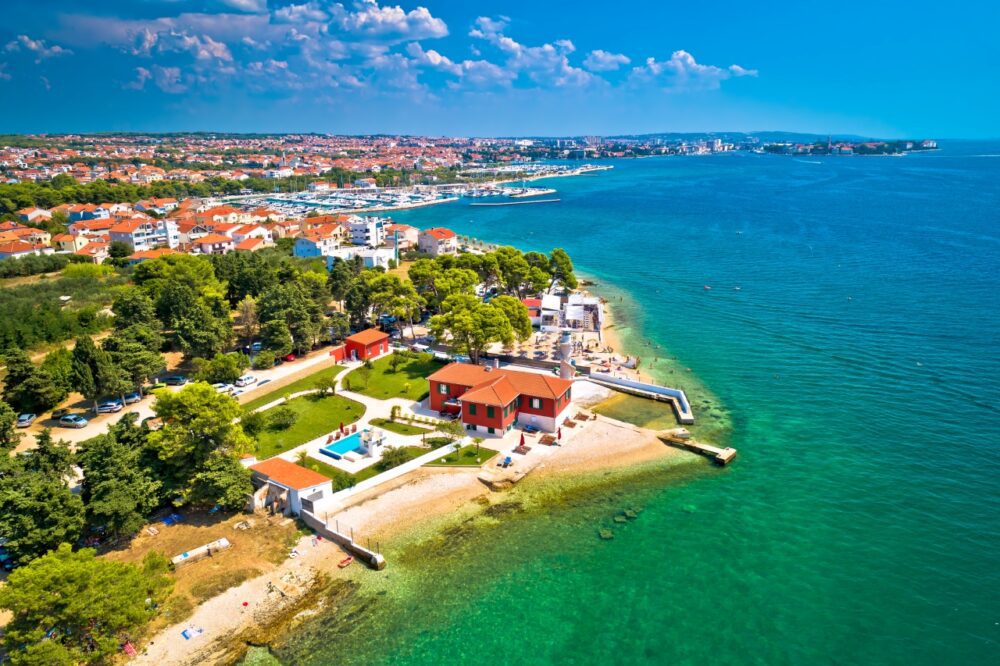
Is Zadar worth visiting? Without a doubt! The first time I set foot in Zadar, I was struck by its unique blend of history, culture, and stunning seaside views. As I walked along the Riva promenade, listening to the hauntingly beautiful notes of the Sea Organ and watching the Sunset Greetings light up the night, I knew I had stumbled upon something special.
Located on Croatia’s Dalmatian coast, Zadar is a city that seamlessly combines its ancient roots with modern innovation. Its Roman ruins, medieval churches, and Venetian walls tell a story of the past, while the quirky Sea Organ and solar-powered light installation celebrate the future. Zadar isn’t as tourist-heavy as Dubrovnik or Split, which gives it a more relaxed and authentic vibe. Add in crystal-clear waters, nearby islands, and mouthwatering local cuisine, and you’ve got a destination that’s hard to resist. But is Zadar worth visiting for you?
In this blog post, we’ll dive into the top 10 reasons why Zadar should be on your travel list, from its historical landmarks to its unique attractions. Plus, we’ll share insider travel tips to help you plan the perfect trip. Keep reading to find out why Zadar might just become your favourite Croatian getaway.
Table of Contents
Pros – Reasons You Should Visit Zadar
1. A Stunning Coastal Location with Fewer Crowds Than Dubrovnik
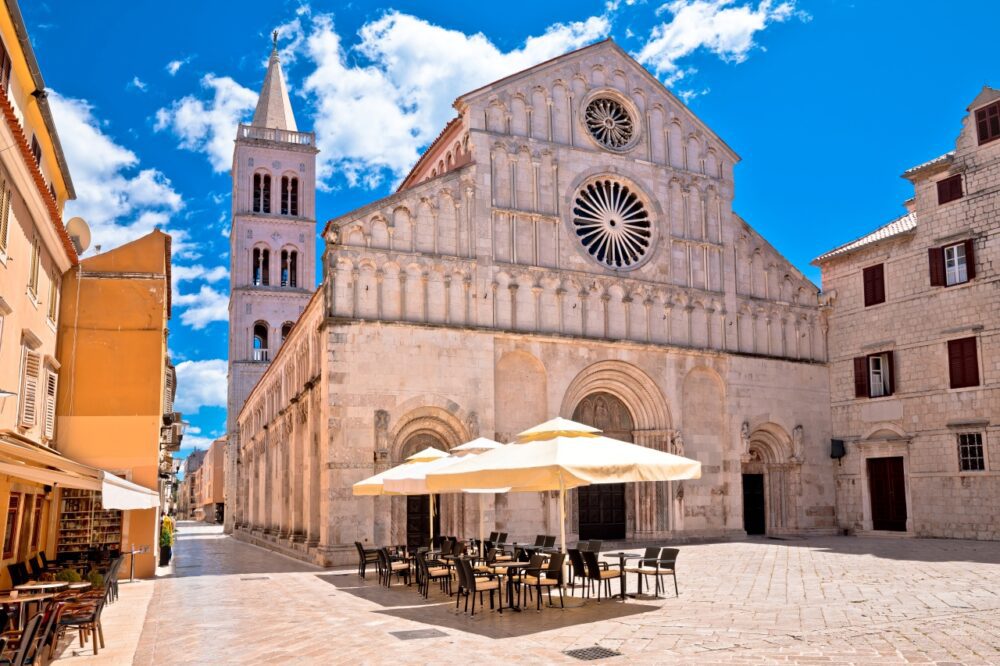
Zadar sits on the Dalmatian coast, offering breathtaking sea views, picturesque sunsets, and easy access to Croatia’s beautiful islands. Unlike Dubrovnik or Split, which can feel overrun with tourists in peak season, Zadar remains more relaxed, making it an ideal destination for those who want to enjoy the Adriatic without the overwhelming crowds.
I arrived expecting another busy Croatian coastal city, but I was pleasantly surprised by how peaceful Zadar felt compared to Dubrovnik. Walking along the seafront promenade, I could take in the views without feeling rushed or jostled by crowds. Even at some of the more famous attractions, it was easy to find quiet spots to enjoy the scenery. If you’re looking for a destination that balances beauty and tranquility, Zadar is a great choice.
2. The Unique and Mesmerizing Sea Organ
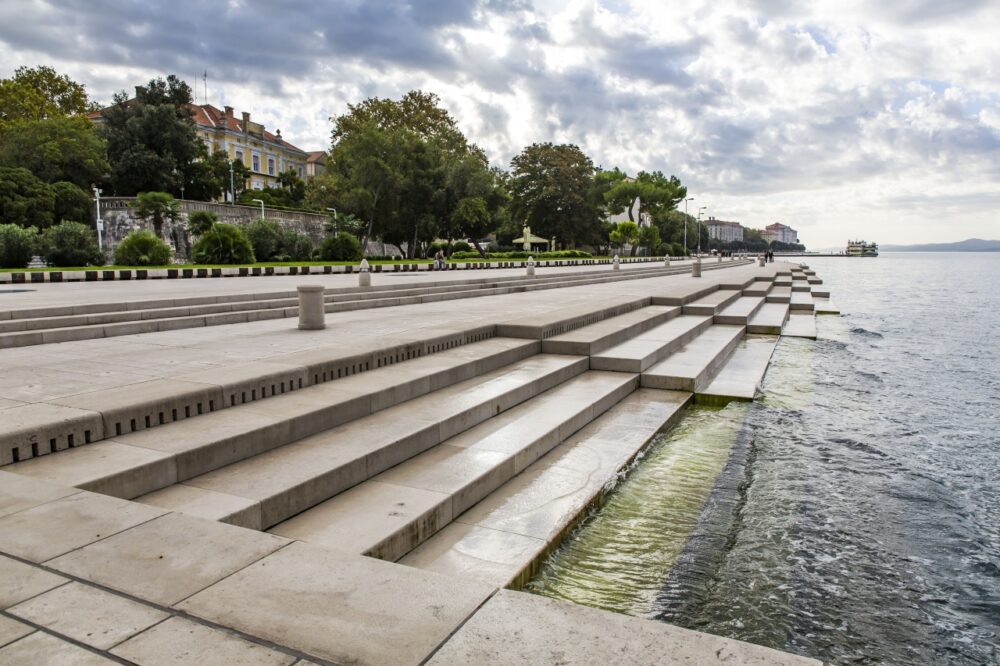
Zadar is home to one of the most fascinating and artistic landmarks in Croatia—the Sea Organ. This modern installation, built into the waterfront, uses the natural motion of the waves to create haunting, melodic sounds. The effect is both calming and mesmerizing, making it one of the most unique places to visit in the city.
I sat on the steps of the Sea Organ at sunset, listening to the deep, echoing sounds as the waves moved through the pipes beneath me. The combination of music and nature was unlike anything I had ever experienced. It’s a simple but unforgettable part of visiting Zadar, and one of the most peaceful spots to unwind after a day of sightseeing.
3. The Greeting to the Sun Light Show
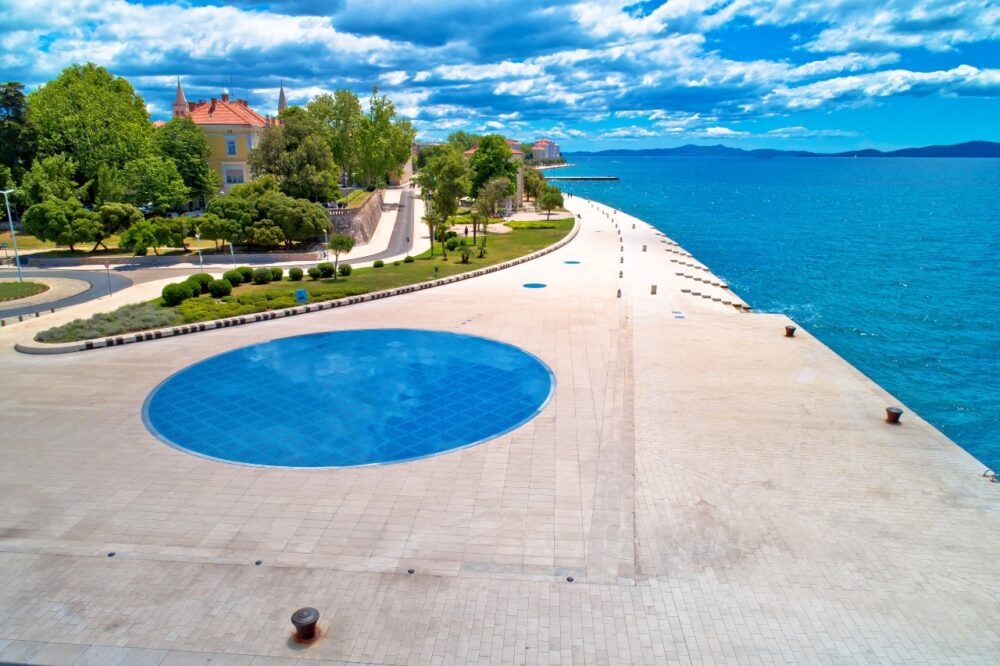
Right next to the Sea Organ, Zadar has another incredible modern attraction—the Greeting to the Sun. This large solar-powered installation, designed as a tribute to the sun, collects energy during the day and transforms it into a colorful light show at night. As darkness falls, the circular platform comes alive with shifting patterns of vibrant lights, creating a mesmerizing display.
I visited just after sunset, and the atmosphere was magical. Families, couples, and groups of friends gathered around, watching the colors change while the sounds of the Sea Organ played in the background. It’s a simple but brilliant addition to the city, making Zadar feel both historic and modern at the same time.
4. A Well-Preserved Old Town with Roman and Venetian Influence
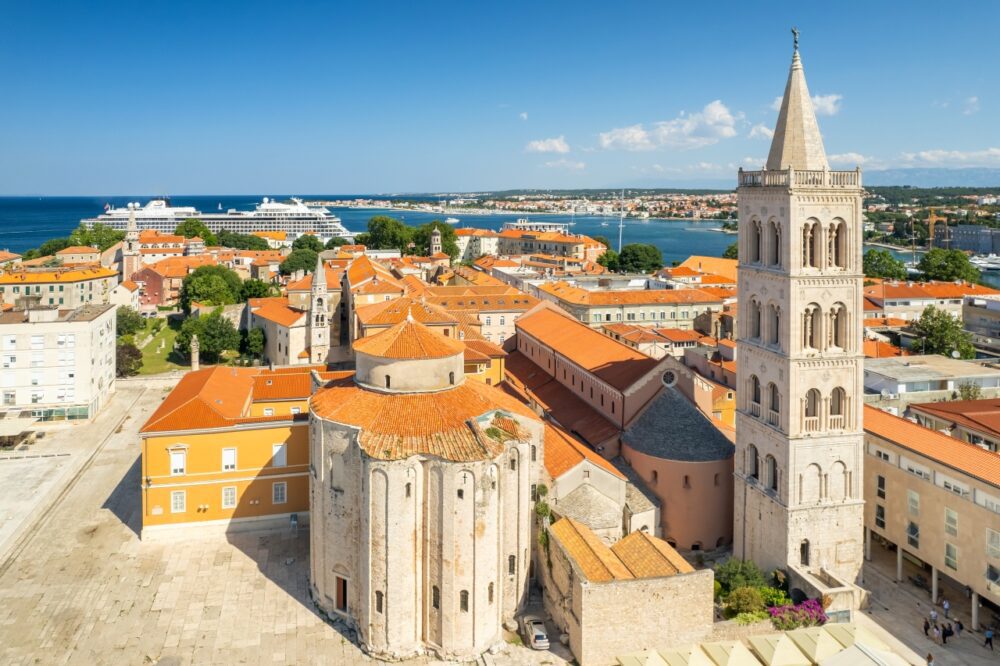
Zadar’s Old Town is a fascinating blend of Roman ruins, medieval churches, and Venetian architecture, all set on a narrow peninsula surrounded by the sea. Unlike some Croatian cities that feel entirely medieval, Zadar offers layers of history, with ancient Roman columns standing beside Venetian palaces and Austro-Hungarian buildings.
I spent hours wandering through the Old Town’s winding streets, discovering hidden courtyards, small cafés, and beautifully preserved historical sites. One of the highlights was the Roman Forum, where you can walk among ruins that date back to the 1st century. The mix of different historical periods gives Zadar a unique and dynamic character that makes exploring it incredibly rewarding.
5. Stunning Sunsets That Inspired Alfred Hitchcock
Zadar is famous for having some of the most spectacular sunsets in the world—so much so that Alfred Hitchcock once declared that the sunset here was the most beautiful he had ever seen. The combination of the open sea, the surrounding islands, and the soft colors of the sky creates an unforgettable view every evening.
I made a point to watch the sunset from the seafront promenade, and it truly lived up to the hype. The sky turned shades of pink, orange, and deep blue, reflecting on the calm water. With the sounds of the Sea Organ playing in the background, it felt like the perfect way to end the day. Whether you watch from the promenade, a seaside café, or a boat, Zadar’s sunsets are one of the highlights of visiting the city.
6. A More Affordable Alternative to Dubrovnik and Split
While Croatia has become an increasingly expensive destination, Zadar remains one of the more budget-friendly coastal cities. Accommodation, food, and activities here are noticeably cheaper than in Dubrovnik or Split, making it a great choice for travelers who want to experience the beauty of the Adriatic without spending a fortune.
I found that eating out in Zadar was significantly more affordable than in Dubrovnik. A full meal with seafood, wine, and dessert cost about half of what I had paid in other parts of the country. Even accommodations, from hotels to guesthouses, offered better value for money. If you’re traveling on a budget but still want to enjoy the best of Croatia, Zadar is an excellent option.
7. Easy Access to National Parks and Islands

Zadar is perfectly located for exploring some of Croatia’s most stunning natural attractions. It serves as a gateway to Kornati National Park, an archipelago of beautiful islands with crystal-clear waters, and Paklenica National Park, a paradise for hikers and rock climbers. The famous Plitvice Lakes National Park is also within a reasonable distance for a day trip.
I took a boat tour to Kornati National Park, and it felt like discovering a hidden paradise. The islands were completely unspoiled, with no crowds or commercialized areas, just breathtaking natural beauty. For nature lovers, Zadar’s location makes it easy to experience both the sea and the mountains without long travel times.
8. Delicious Dalmatian Cuisine with Fresh Seafood
Zadar offers some of the best food in Croatia, with a focus on fresh seafood, locally grown produce, and traditional Dalmatian recipes. From octopus salad and grilled fish to black risotto and homemade pasta, the city’s restaurants serve high-quality, flavorful dishes.
One of my favorite meals was at a small family-run konoba (traditional tavern) where I tried pašticada, a slow-cooked beef stew served with homemade gnocchi. The rich flavors and tender meat made it one of the most memorable meals of my trip. The best part? Even at a highly-rated restaurant, the prices were much more reasonable than in Croatia’s more touristy cities.
9. A Relaxed and Less Touristy Atmosphere
Unlike Dubrovnik, which can feel overwhelming with crowds, Zadar has a much more laid-back atmosphere. The city is lively, but it doesn’t feel overrun by tourists, allowing visitors to experience its beauty at a more relaxed pace.
I appreciated how easy it was to find quiet spots in Zadar, whether it was a peaceful corner of the Old Town, a hidden café, or a stretch of the promenade away from the main attractions. Even in the peak of summer, the city didn’t feel as chaotic as some of Croatia’s other coastal destinations. If you prefer a slower, more authentic experience, Zadar is a great choice.
10. A Lively Cultural Scene with Festivals and Events
Zadar hosts a variety of festivals and cultural events throughout the year, making it a fun destination for those who enjoy music, art, and entertainment. From the Zadar Summer Theatre Festival to the Musical Evenings at St. Donatus Church, there’s always something happening in the city.
I was lucky enough to visit during a live music event at the Roman Forum, where local musicians performed under the open sky. The atmosphere was incredible, blending history and culture in a way that felt uniquely Croatian. Whether it’s classical concerts, food festivals, or art exhibitions, Zadar offers a rich cultural experience beyond just sightseeing.
Cons – Things to Consider When Visiting Zadar
1. Limited Sandy Beaches and Crowded Swimming Spots
While Zadar is a stunning coastal city, it doesn’t have the long, sandy beaches that many travelers expect from a seaside destination. Most of the swimming areas around the city are rocky, pebbly, or concrete, meaning that finding a comfortable place to relax by the water can be challenging. The few beaches that do exist, such as Kolovare Beach, can get extremely crowded in the summer, making it difficult to find space, especially if you arrive later in the day.
I visited Kolovare Beach on a hot afternoon, and while the water was beautifully clear, the beach itself was packed with sunbathers, leaving little room to spread out. The concrete swimming areas near the Old Town were slightly less crowded, but they lacked the charm of a traditional beach setting. If you’re looking for pristine sandy beaches, you’ll need to take a boat to one of the nearby islands, like Dugi Otok, which offers much more space and natural beauty.
2. The Old Town Feels Small and Can Be Explored Quickly
Zadar’s Old Town is beautiful and full of history, but it’s relatively small compared to other Croatian cities like Dubrovnik or Split. Most of the main sights, including the Roman Forum, St. Donatus Church, and the Sea Organ, can be seen in just a few hours. This means that visitors who are looking for a long list of historical landmarks or extensive sightseeing opportunities might find themselves running out of things to do after a day or two.
I spent a full day exploring the Old Town and found that by the evening, I had covered nearly everything I wanted to see. While I loved the relaxed atmosphere, I could see how some travelers might feel like they needed more activities to fill their time. If you’re planning to stay in Zadar for several days, it’s worth including day trips to places like Plitvice Lakes or the Kornati Islands to add more variety to your itinerary.
3. The Summer Heat Can Be Uncomfortable
Like much of Croatia, Zadar experiences very hot summers, with temperatures often exceeding 35°C (95°F) in July and August. The Old Town, with its stone streets and limited shade, can feel particularly intense during the afternoon, making sightseeing physically exhausting. Many of the city’s main attractions, such as the Roman Forum and the waterfront promenade, have little cover from the sun, which can make exploring uncomfortable for those not used to high temperatures.
I walked through the Old Town in the early afternoon, and the heat was overwhelming. The white stone buildings and streets reflected the sun, making it feel even hotter than the actual temperature. Finding shade was difficult, and many of the small cafés and restaurants had already been filled with people trying to escape the sun. If you’re visiting in summer, it’s best to explore in the morning or late afternoon, take breaks in air-conditioned spaces, and drink plenty of water to stay hydrated.
4. Some Areas Feel Less Polished Than Other Croatian Cities
While Zadar has plenty of beautiful spots, some parts of the city—especially outside the Old Town—feel a little rough around the edges. The city has undergone a lot of modernization, and while this has improved infrastructure, some areas still show signs of wear and tear, with older buildings that look neglected and streets that don’t have the same polished feel as those in Dubrovnik or Split.
I noticed this when walking beyond the main tourist areas. Some buildings had peeling paint and graffiti, and certain streets didn’t have the same charming aesthetic as the Old Town. This doesn’t mean Zadar is unattractive, but if you’re expecting a picture-perfect city in every corner, you might be surprised by the contrasts between the well-maintained historic center and some of the more residential or industrial parts of town.
5. Limited Nightlife Compared to Split or Hvar
Zadar has a relaxed and enjoyable evening atmosphere, but if you’re looking for a lively nightlife scene with packed clubs and all-night parties, it doesn’t compare to cities like Split or Hvar. While there are bars and beach clubs, the city leans more towards casual nightlife rather than high-energy partying. Many of the bars close relatively early, and the club scene isn’t as developed as in other coastal destinations.
I went out for drinks on a Saturday night and found that while there were plenty of nice places to sit and enjoy a cocktail or a glass of wine, the overall nightlife felt more subdued. There were a few clubs near the beach, but they weren’t as lively as the nightlife hotspots in Split. If you’re looking for a party destination, Zadar might not be the best choice—but if you prefer a relaxed evening scene with live music and waterfront bars, it’s a great fit.
When to Visit Zadar
The best times to visit Zadar are late spring (May to June) and early autumn (September to October), when the Adriatic is warm enough for swimming, the weather is pleasant, and the summer crowds are thinner. In these shoulder seasons, Zadar is lively but less hectic, and you’ll enjoy lower prices and shorter queues. Summer (July and August) is peak season, with a vibrant atmosphere, local festivals, and beach-perfect temperatures, though prices and crowds are at their highest. Winter is quieter, with a local feel and mild temperatures, making it ideal if you prefer exploring ancient streets and historic sites at a slower pace.
How to Get to Zadar
Zadar Airport (ZAD), located about 12 kilometres from the city, is the main gateway to Zadar, with seasonal flights from airlines like Ryanair, Eurowings, and Croatia Airlines connecting it to various European cities. From the airport, you can catch a shuttle bus to Zadar’s main bus station or take a taxi directly to the city centre, about a 15-minute drive. For those arriving from other Croatian cities, Zadar is easily accessible by bus, with direct connections from Split, Dubrovnik, and Zagreb. Zadar also has ferry links to nearby islands and coastal cities, ideal for exploring the Dalmatian coast by sea.
Where to Stay in Zadar
Zadar has a variety of accommodation options across its diverse neighbourhoods:
- Luxury: Old Town (Poluotok) – The historic heart of Zadar is ideal for exploring landmarks like the Sea Organ and Roman Forum. Stay at Heritage Hotel Bastion or Almayer Art & Heritage Hotel for a mix of luxury and history.
- Mid-range: Borik – Just north of the centre, Borik offers beaches and a relaxed vibe, with easy access to the Old Town by bus. Hotel Kolovare and Falkensteiner Hotel Adriana provide comfort and proximity to the beach.
- Budget: Arbanasi – A residential area near the main bus station, Arbanasi has budget-friendly options like Downtown Boutique Hostel and Tequila Bar Hostel, perfect for those looking to save while staying close to the action.
Getting Around Zadar
Zadar’s Old Town is compact and best explored on foot, with its maze of narrow streets and historic sites making walking the most enjoyable way to see the sights. For trips further afield, the Liburnija bus network connects Zadar’s main areas, and tickets are affordable if you buy them at kiosks. Zadar doesn’t yet have a bike-sharing scheme, but local shops offer bike rentals, a great option for cycling along the coast or around the Borik area. To explore nearby islands, the Zadar Ferry Port has regular routes to islands like Ugljan and Dugi Otok, providing a scenic way to experience the Adriatic.
How Long to Spend in Zadar
Two to three days is ideal for experiencing Zadar’s main highlights, including the Sea Organ, Greeting to the Sun, and Roman Forum. You’ll have time to relax on the beaches, sample local seafood, and watch a famous Zadar sunset from the waterfront. With an extra day, consider a day trip to Krka National Park or Plitvice Lakes for some of Croatia’s best nature spots. If you’re up for more adventure, add a day to visit Dugi Otok island for hidden coves, cliffside views, and a taste of island life.
Conclusion
So, is Zadar worth visiting? Absolutely! With its rich history, innovative attractions like the Sea Organ, and stunning Adriatic views, Zadar is a city that offers a little bit of everything. It’s less crowded than Croatia’s more famous destinations, which means you can explore at a more relaxed pace. While it might not have the grandiose reputation of Dubrovnik, its charm and unique character more than make up for it. If you’re ready to discover a Croatian destination that’s as beautiful as it is authentic, start planning your trip to Zadar today—you won’t be disappointed!
